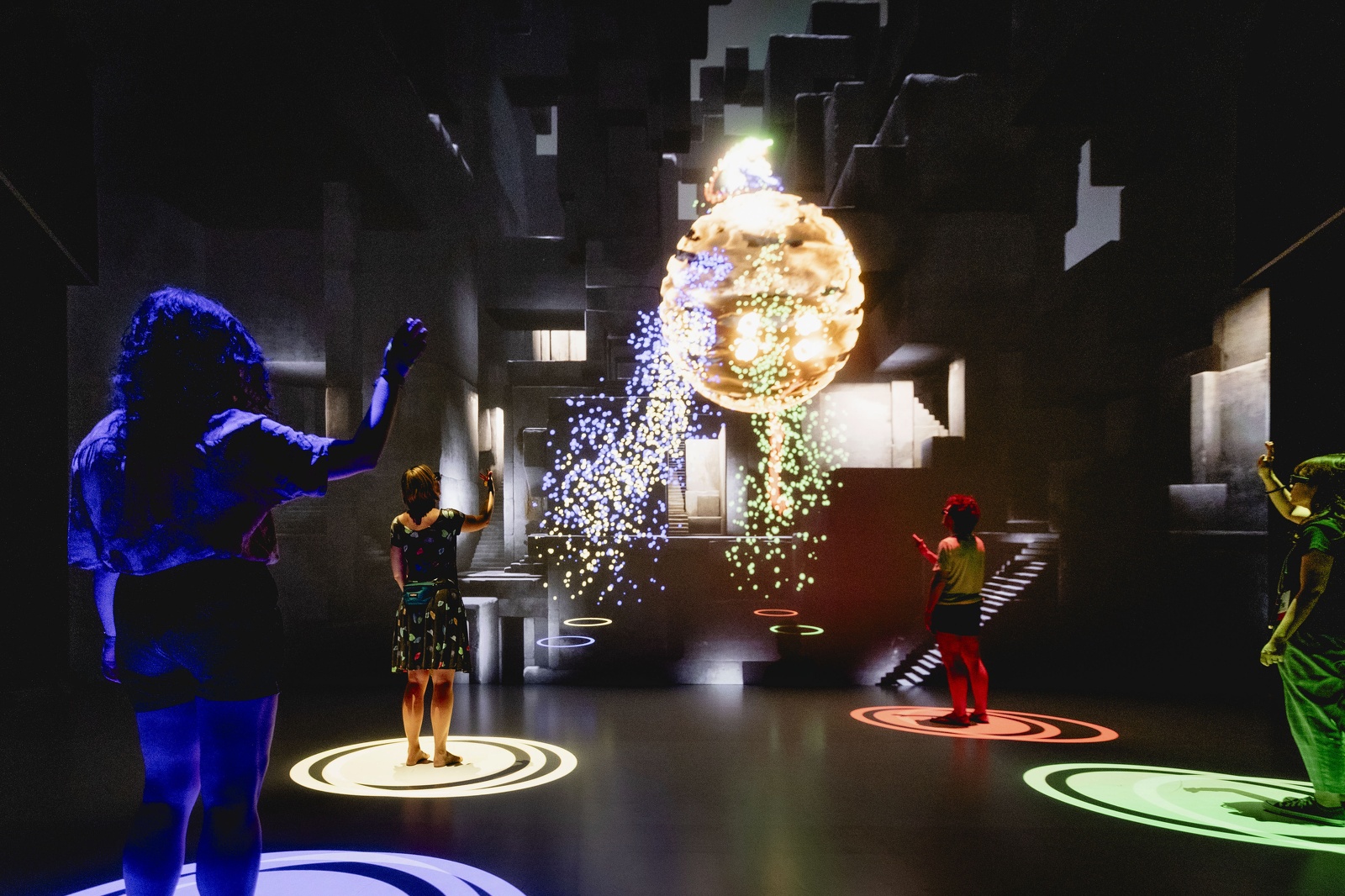Technology is not an end in itself. We bring it into the world to shape our lives according to our desires. However, who develops it and for what purpose is crucial.
“I [have met] a lot of gen AI developers. Great people, but they’re making stuff in a vacuum. They’ve never made a shot for a movie from end to end. All the production-focused tools that were built over the last 30-some years in CG and in VFX were created because productions needed them. They weren’t created in a vacuum.“
James Cameron in an interview with Janko Roettgers for The Verge
Once again, the headlines are dominated by Silicon Valley, where the drama of “making our future” unfolds. Brilliant minds from across the globe are gathered, and unprecedented sums are invested to accelerate technological progress. But when MAMAA (Meta, Apple, Microsoft, Amazon, Alphabet) drives this, the results inevitably serve their own ends: maximizing attention and ad revenue, locking in proprietary systems, and cementing their dominance and power.
But this is not the way it must be. Things change when other communities — with different interests — step in. At Ars Electronica, we partner with actors from diverse fields to experiment with how technology can be developed and applied to support human flourishing – instead of just driving profits for a few. We also explore how artists, researchers, activists, and citizens adapt and repurpose technology for their own aims.
Of course, not every prototype that emerges from this process will change the course of technology. Yet the more people experiment and build technology themselves, the more they — and others — dare to imagine alternative paths and claim a seat at the table where our shared future is shaped. In this way, developing technology becomes an inclusive and diverse endeavor — one that serves not just a privileged few but all of us.
Sparking curiosity
Our world is endlessly fascinating — from the tiniest particle to the largest cosmic structure. Curiosity keeps us learning, broadens our horizons, and nurtures care for the things we encounter. Technology should strengthen this impulse: it should inspire wonder and draw us deeper into the world, not distract us from it (with shopping feeds or endless online shouting matches).
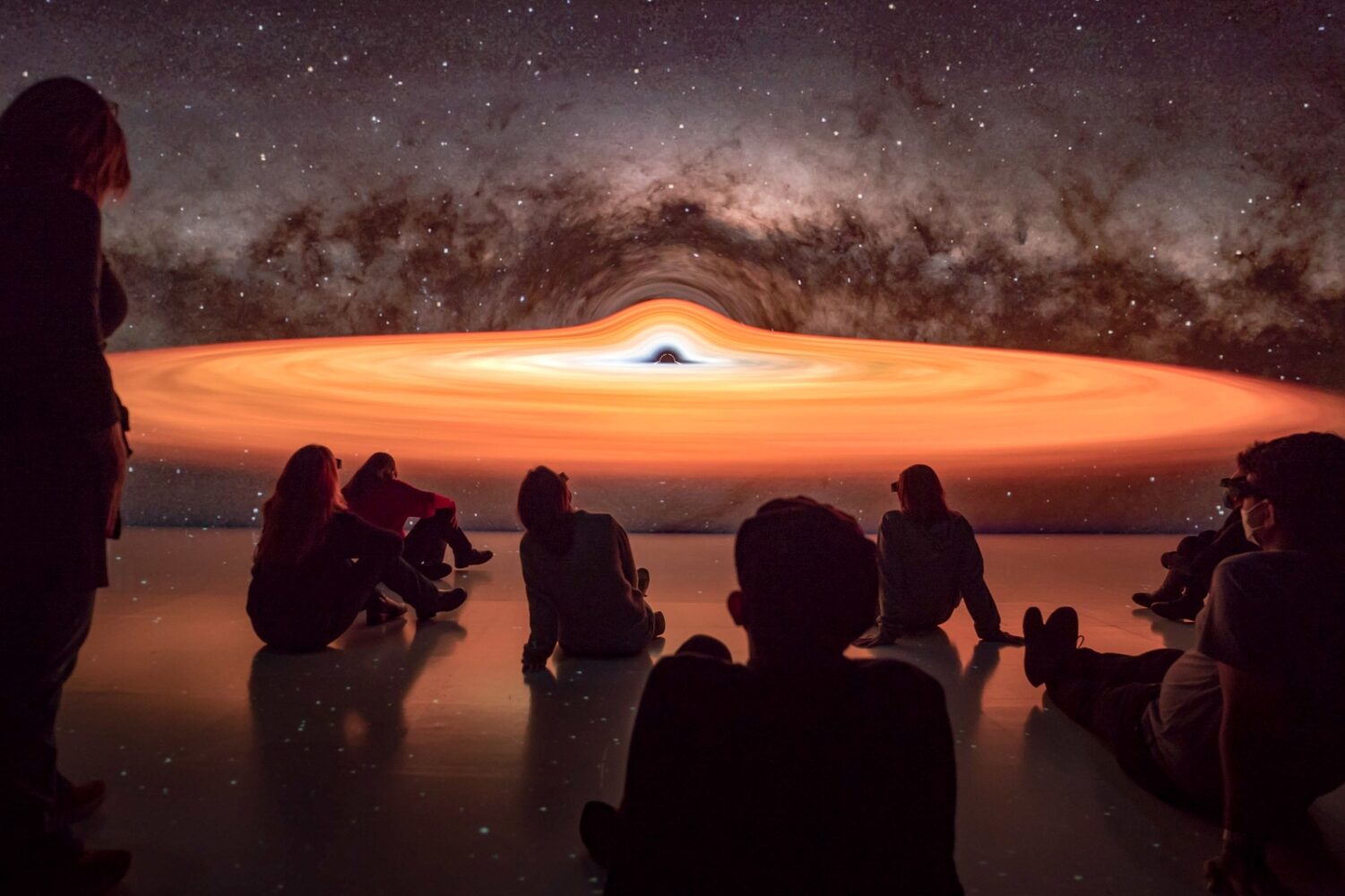
“Oh wow, the Earth is such a tiny, tiny spot in this huge universe and all our quarrels here seem so unimportant”, says a young woman to her friend, while walking out of Deep Space 8K at Ars Electronica Center.
Almost everybody has this impression, having experienced the immersive application “Uniview” for the first time, says Melinda File, Head of Deep Space. The visualization software enables interactive 3D journeys through the known and observable universe. In stunning imagery, space unfolds as never before — from black holes to exoplanets, and the cosmic background radiation. For over 10 years now she has been giving presentations such as Uniview, and still she is inspired by seeing how people come to see the application and how they leave after.
It’s not only the vastness of space that is hard to grasp for us humans. It’s the same with the oceans, that cover two thirds of the “Blue Marble”. Yet only 20 percent of the biggest ecosystem on earth, that is so essential for (our) life, have been systematically mapped and explored. To bring the beauty and complexity of this world to life, Ars Electronica Solutions used seven Epson installation projectors to project animated images with a resolution of around 60 million pixels onto a 40-meter-high screen in the Gasometer Oberhausen. Visitors can step under a second horizontal projection surface (“Gaze”) and use their movements to create spatial effects that immediately change their perception of the image space.
Life-size images of whales and other sea creatures, low-frequency sounds inspired by whale songs, and large-scale projections of realistic underwater scenes combine in the installation “Die Welle” (The Wave) to create an immersive experience that impressively conveys the beauty and diversity of the oceans—without the need for a diving suit.
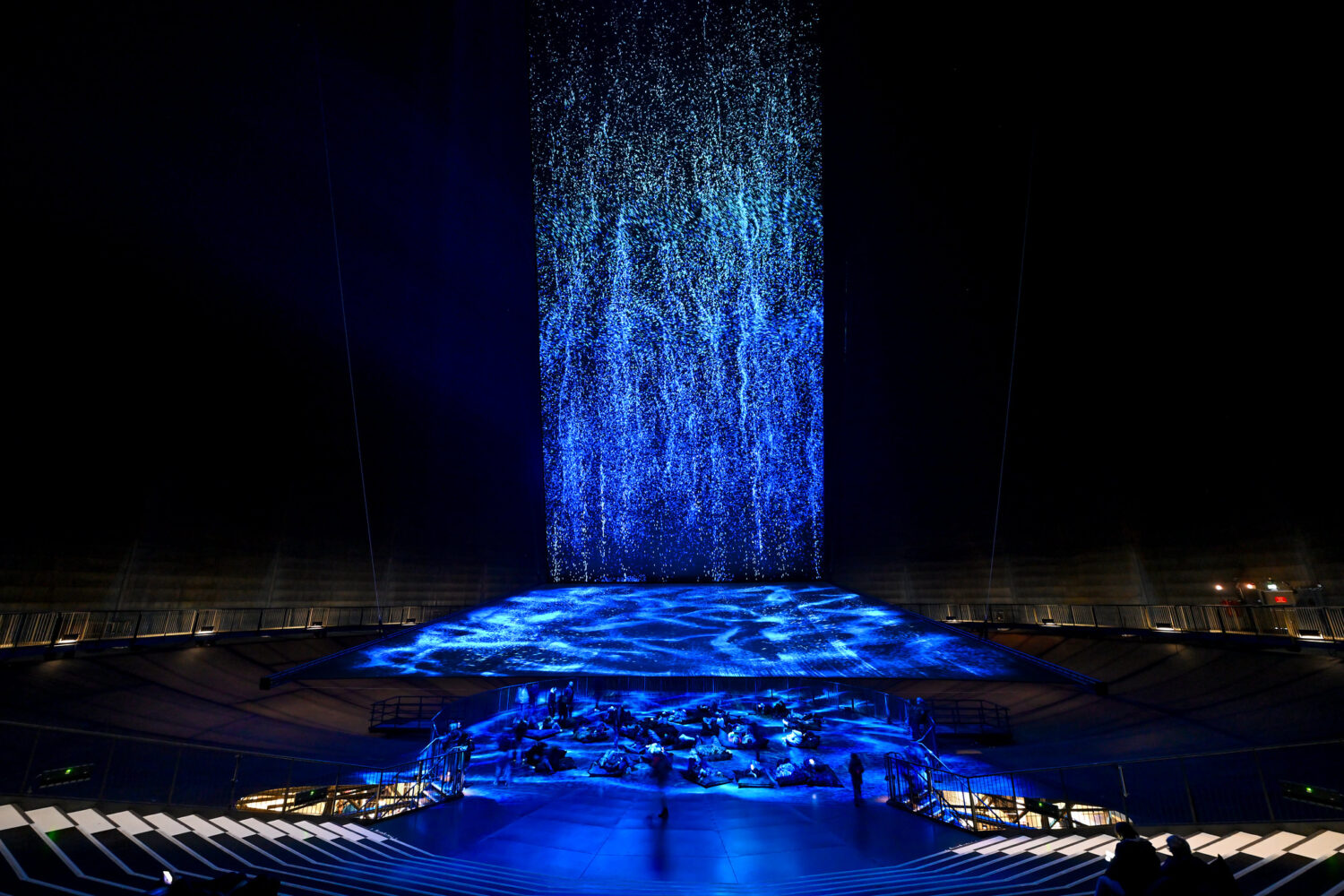
“We don’t just want to explain knowledge, we want to bring it to life”, says Ina Badics. As Senior Project Manager at Ars Electronica Solutions, she explores how the complexity of the world can be made not just accessible, but fascinating. “With the right mix of interactivity, immersion, and aesthetics, abstract numbers and information turn into experiences that invite wonder and create a deeper connection.”
“It’s not about conveying textbook knowledge, but about creating an atmosphere that gives people the feeling of being part of the topic themselves”
Ina Badics, Senior Project Manager Ars Electronica Solutions
Space, the deep sea, and the human body might seem worlds apart, yet they share a common thread: each is a frontier of the unknown. While Uniview directs our gaze toward the sky and “The Wave” immerses us in the depths of the oceans, “Cinematic Anatomy x Deep Space,” developed by Ars Electronica Futurelab in collaboration with researchers from Siemens Healthineers and Univ.-Prof. Dr. Franz Fellner, invites us to explore our inner selves.
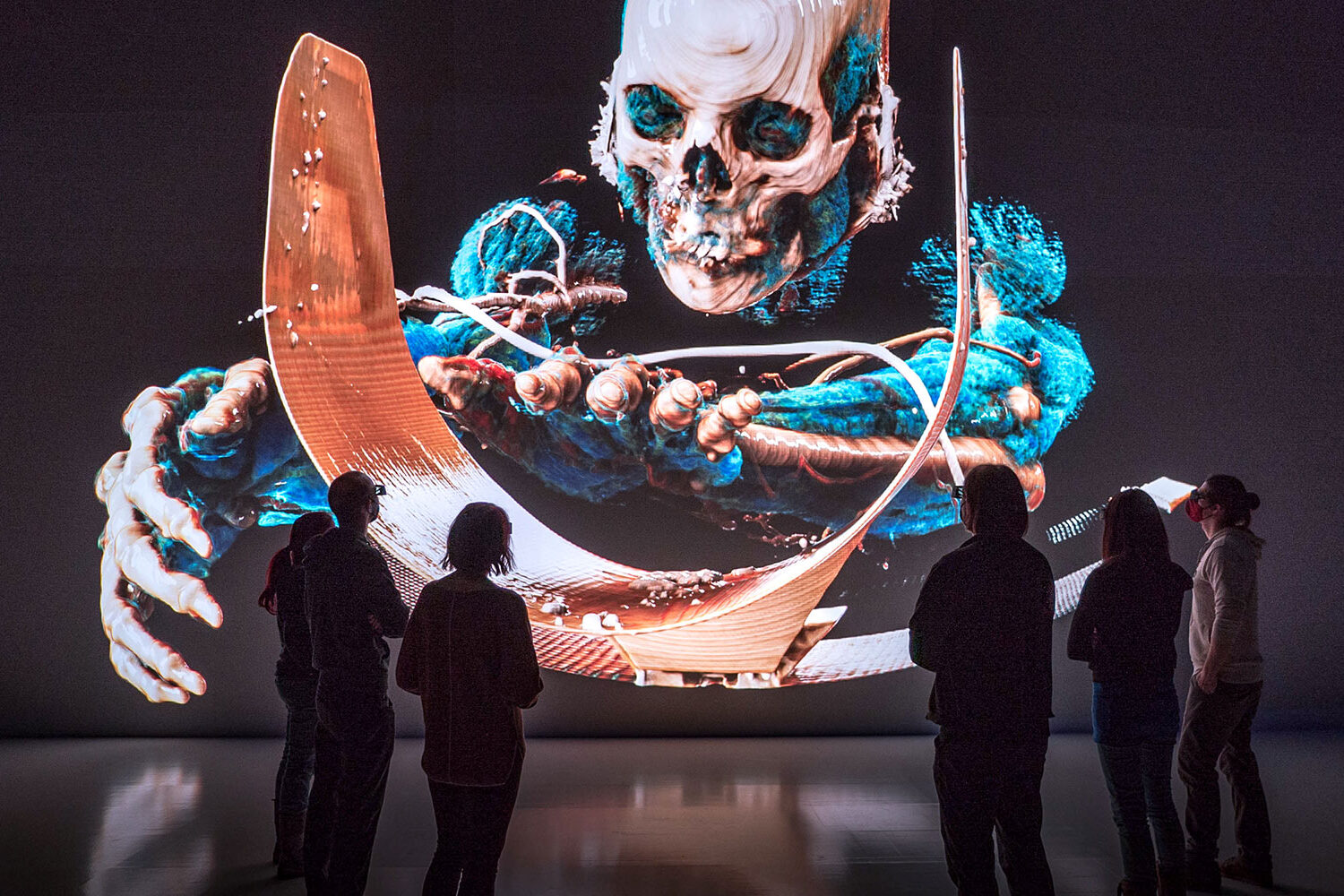
Merging cutting-edge medical imaging with techniques borrowed from Hollywood, the software uses the same lighting methods once employed to bring digital characters like Gollum from “The Lord of the Rings” to life. This cinematic approach creates strikingly realistic visualizations of the human body. The software allows organs, blood vessels, muscles, and other structures to be viewed larger than life as razor-sharp 3D objects from any angle. Individual data can be shown or hidden at the touch of a button. Shown in large-scale environments like Deep Space 8K or JKU’s medSPACE, these visualizations reveal how intricate the human body is, shaped over millions of years of evolution – and how medicine can benefit from new technologies. Prof. Dr. Franz Fellner, Director of the Central Radiology Institute of Johannes Kepler University Linz, who uses this technology for his course Virtual Anatomy is enthusiastic about the technology and how it can inspire students:
“In virtual anatomy, we work with data sets from MR and CT scans of living people. Classical anatomy teaches using specimens from body donors. Both are extremely important for gaining a comprehensive understanding of anatomy and pathology. This takes education to a whole new level.”
University professor Dr. Franz Fellner
Fostering understanding
Our world is complex. The physics, chemistry, and biology that sustain it are hard to grasp. And on top of that, the “pale blue dot,” as Carl Sagan famously called Earth, is home to a social animal that builds intricate, fragile, and somehow strange civilizations. Today, it is more important, and more interesting, than ever to understand how our world works. Technology can help us do this: it allows us to see, measure, calculate, show, and interpret what past generations could barely imagine.
Cultural heritage tells stories that are as thrilling as inspiring. It reflects how humans built communities, societies, and civilizations; it surfaces what they valued, how they organized their lives, and which skills and technologies they used to shape their environment. By studying cultural heritage, we learn how earlier societies solved challenges, expressed values, and left behind structures that continue to influence us today. Technology adds a new layer to this understanding by opening up perspectives that would otherwise remain hidden.
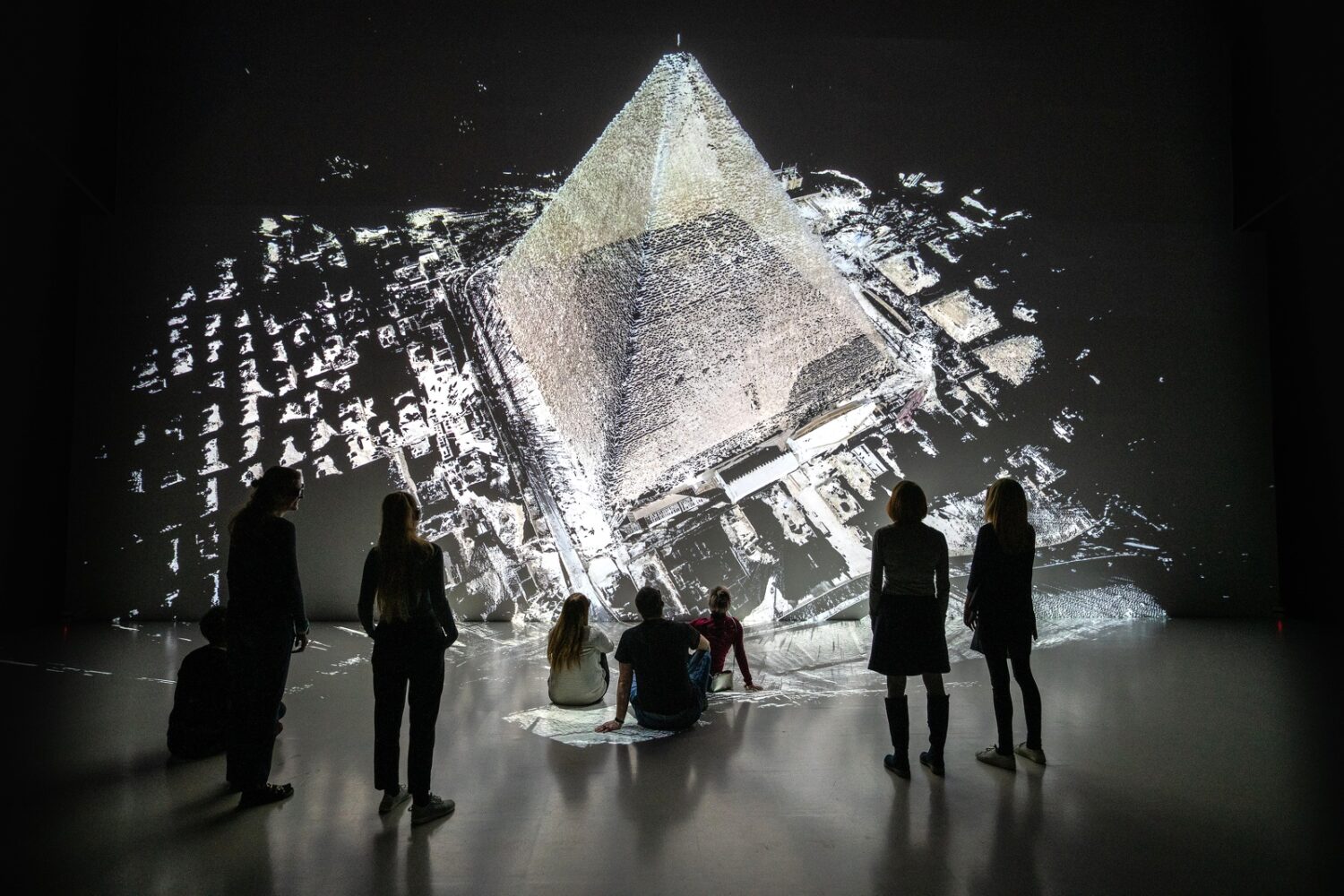
Michaela Wimplinger, Head of Special Projects, who curates cultural heritage projects at Ars Electronica, brings this perspective to life in Deep Space 8K. Here, visitors can walk the streets of ancient Rome, marvel at the detailed gigapixel images of the Sistine Chapel, or explore the Cheops Pyramid in Egypt. As she explains, “Art and cultural treasures not only reflect the political, religious, technological or artistic facets of their time. They also reveal the canon of values of the society at the time.” By staging these immersive experiences, cultural history is made tangible — showing that understanding the past is key to understanding ourselves.
Connecting people
The digital era arrived with the promise of connecting us all. In theory, we can reach anyone, anytime, anywhere. In practice, things are more complicated. The internet is not a neutral, static network that simply connects dots; its connections are curated by algorithms in real time. Every action we take creates data that is stored, analyzed, and fed back into shaping our future interactions.
This ongoing feedback loop produces a digital space that looks different for each of us. Unlike the shared physical world, the digital one is constantly personalized. That can be convenient, but it also has serious downsides. Personalization reinforces tribes, amplifies their perspectives, and weakens dialogue with those who think differently.
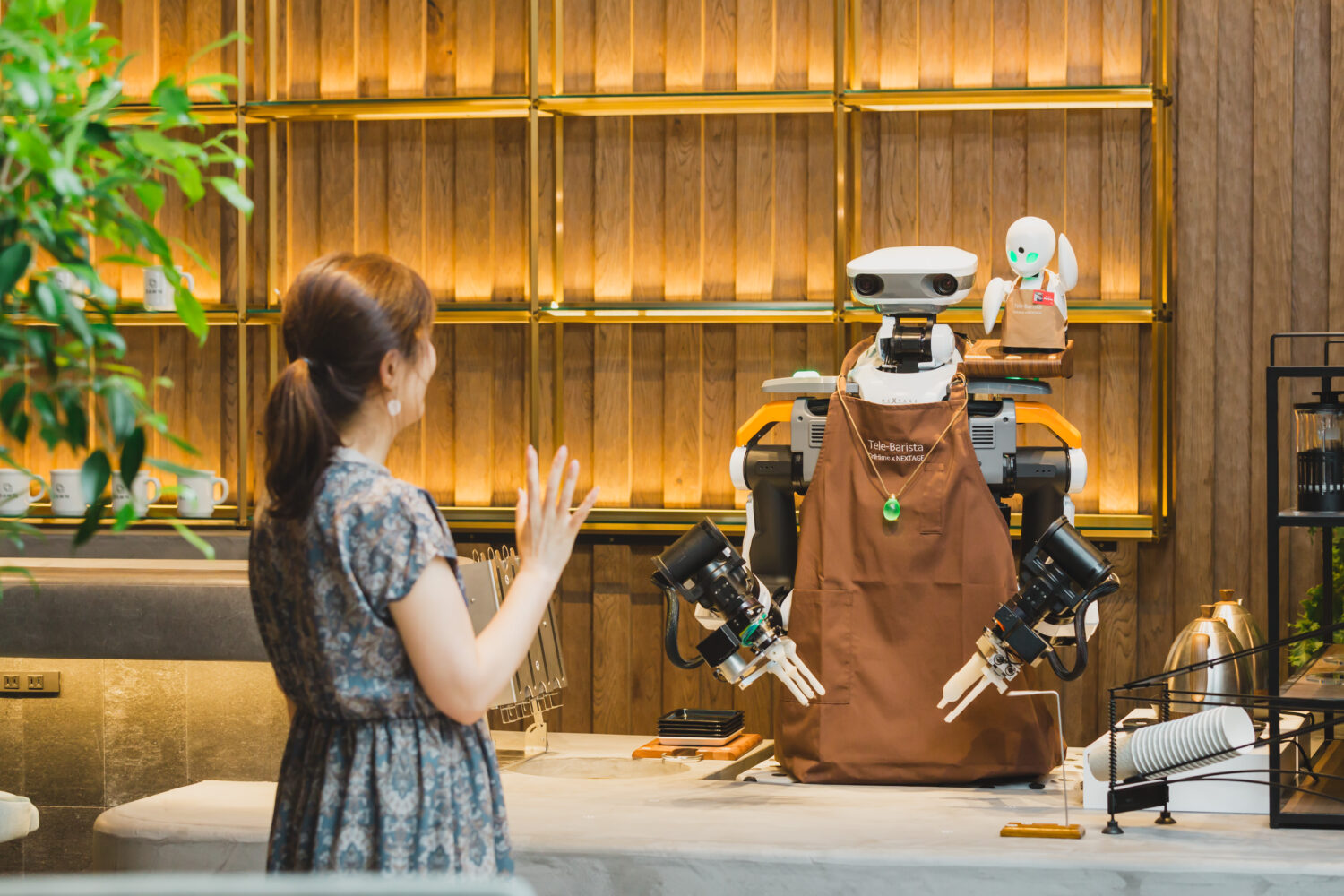
So, if algorithms divide us, how can technology bring us back together? The “Avatar Robot Cafe” flips the narrative and shows how technology can help overcome social barriers and build bridges where walls once stood. Robots enable people who are unable to participate in working life due to severe physical limitations to serve customers in a café without being there in person. The robots are designed to be controlled via eye tracking, as well as mouse and smartphone inputs.
For Gerfried Stocker, artistic director of Ars Electronica, it is more than just a clever technological idea, but a deeply human statement: “Do we continue to allow technology to divide, replace, and control us? Or do we finally design it in such a way that it connects, supports, and strengthens us?”
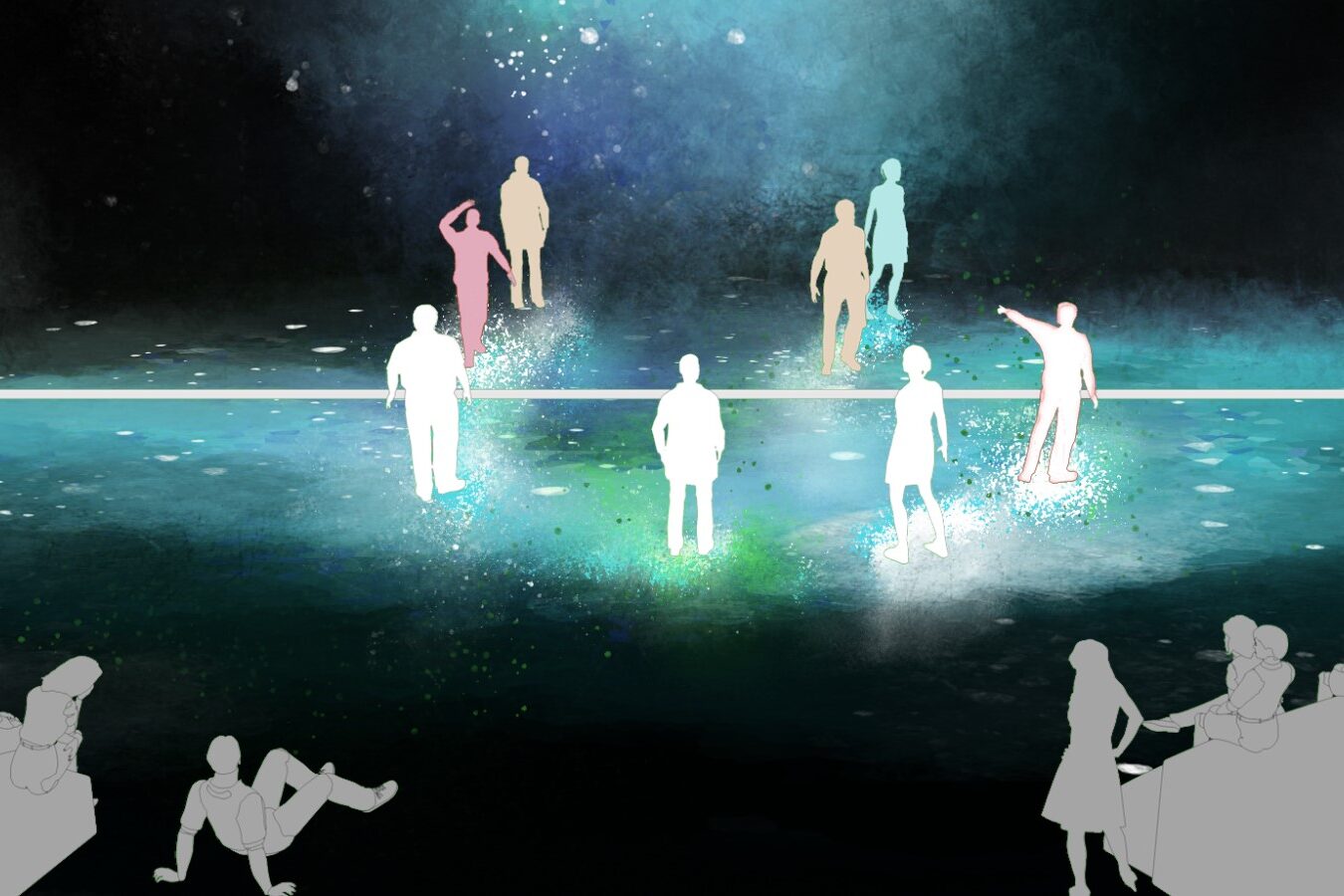
SHARESPACE takes the theme of connection a bit further by asking how we can interact with both humans and machines in hybrid environments in meaningful ways. Funded by the European Commission and implemented by 14 partners from eight countries, it aims to develop new forms of digital interaction that can be experienced physically, sonically, and emotionally. Unlike consumer AR and VR projects, which primarily aim to increase efficiency, scale, or entertain, SHARESPACE takes a different approach: it emphasizes participation, ethical reflection, creativity, and shared experience.
Ars Electronica Futurelab is designing the artistic branch of the project. “Converge” is an interactive implementation of the SHARESPACE principles, developed in 3D for Deep Space 8K. It uses tracking for up to ten participants present on site and a motion capture suit for one remote participant. Everyone must work together to progress and can only communicate with the remote participant through movement and body language. They must solve scenarios and are guided only by subtle visual cues. The minimalist style emphasizes movement and interaction, culminating in participants directing masses of AI characters.
Technologies like streaming, gaming, and social media keep us constantly connected — yet, paradoxically, they often lead to spending more time alone, immersed in personalized feeds. At the Ars Electronica Center in Linz, Deep Space 8K offers something that these individual experiences cannot: a collective experience. Equipped with a high-performance laser tracking system and a 50 million pixel resolution, it serves as an interface connecting people with immersive imagery worlds. Unlike touchscreens or mouse clicks, the system responds to the movements of the human body, transforming gestures into a form of control. This physical interaction makes the experience not only more intuitive but also inherently social, opening up new possibilities for collaboration and cooperation within the shared environment.
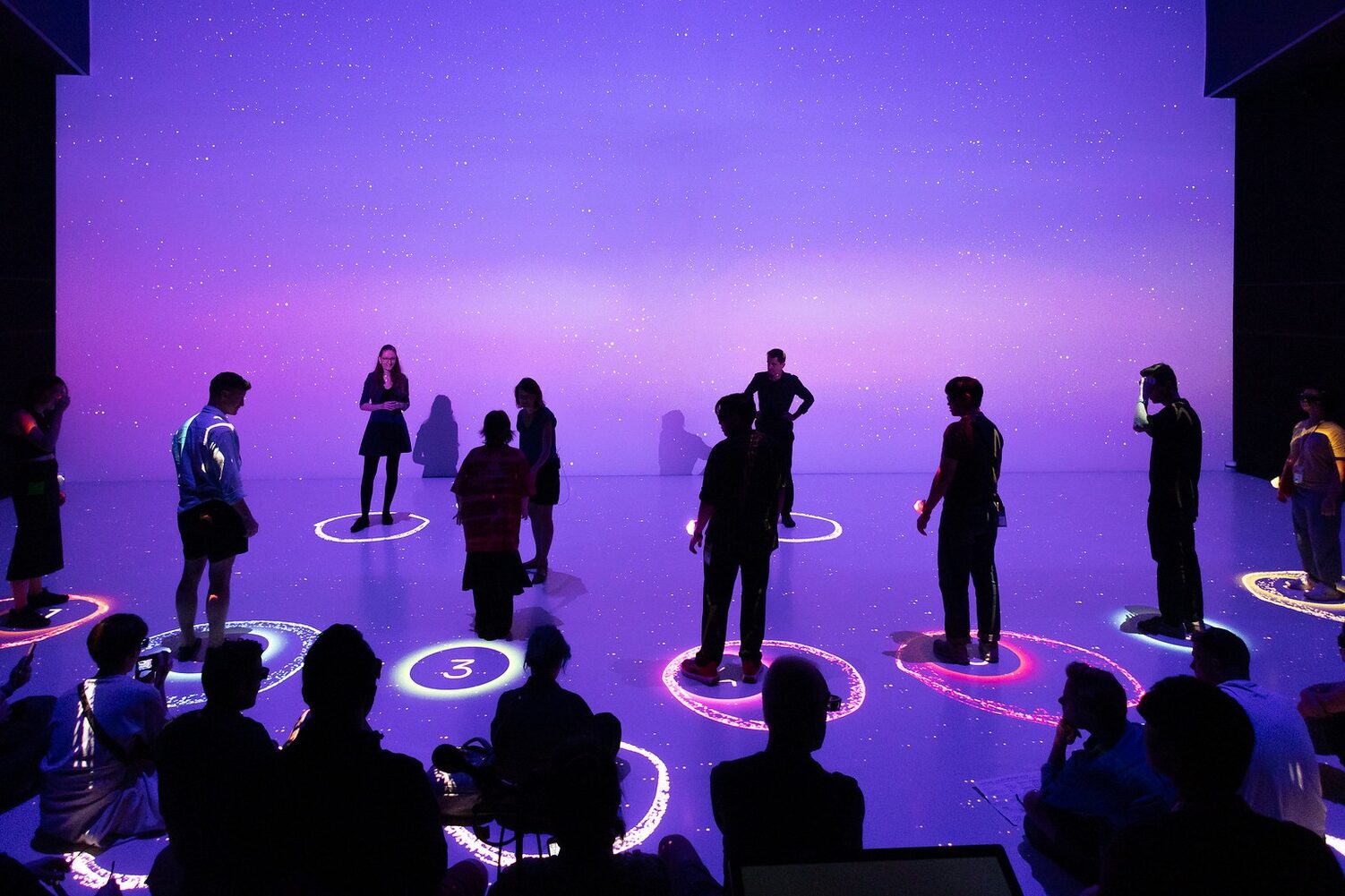
Pushing creativity
Humans have always been creative. From the beginning, creativity drove the development of tools and technologies, which in turn enabled new forms of expression. Over time, these tools gave rise to vast reservoirs of artistic possibility — from painting and music to film, animation, and digital art.
Generative AI is another such technology. It has the potential to expand our creativity to new levels — if we design it as a tool to support, not automate away, our imagination.
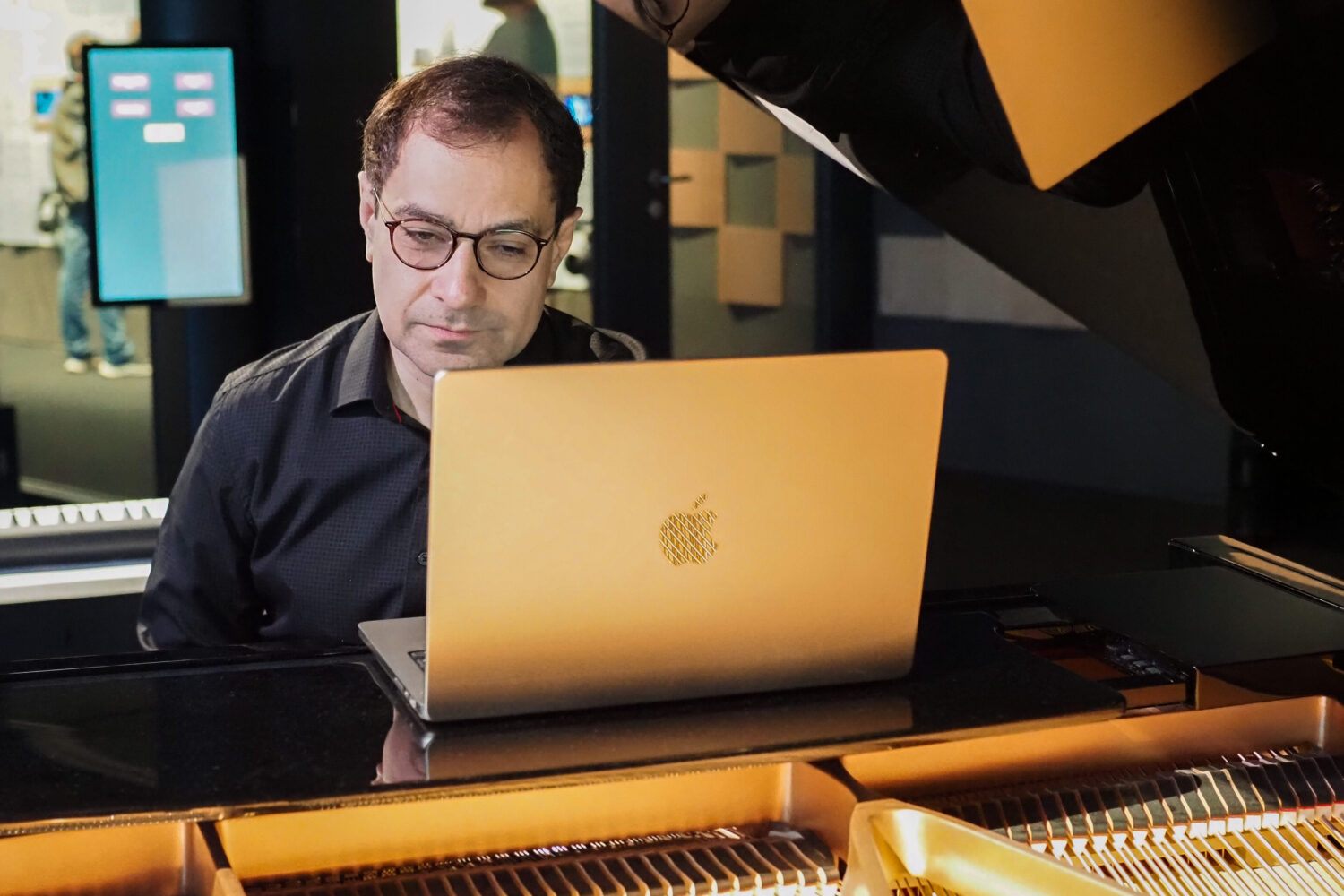
Ali Nikrang is convinced that artificial intelligence must not take over and automate, but enhance the creative process. As a researcher and artist at the Ars Electronica Futurelab, as well as a professor of AI and musical creation at the University of Music and Performing Arts in Munich, for him technology should challenge people and motivate them to go past their limits.
“Creativity does not arise from mere copying, but from the further development of ideas and the overcoming of familiar patterns.”
Ali Nikrang, Researcher Ars Electronica Futurelab
New technologies have always enabled new forms of artistic expression. “Waltz Symphony” brings this idea into collective, public space. Ali Nikrang collaborated with students from universities across Europe and his own AI system “Ricercar”. The focus was not on letting the AI copy existing styles — in this case, Johann Strauss — but on exploring how algorithms can support the process of composition without replacing human intention.
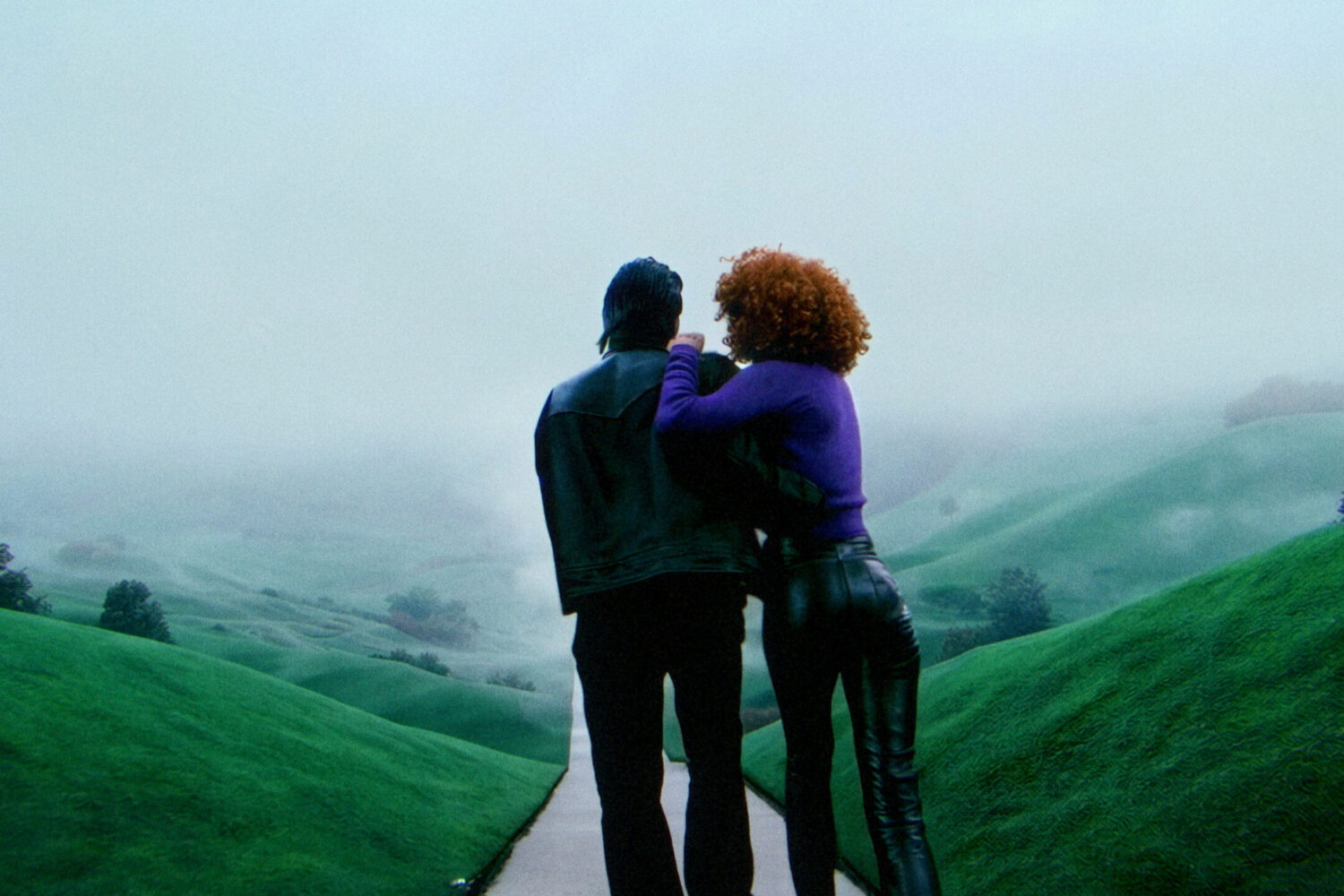
Paul Trillo also explores how artificial intelligence can expand the imagination. In his music video for “The Hardest Part” by Washed Out, he presents the first fully generative video created using OpenAI’s text-to-video model, Sora. Using AI technology allowed Paul Trillo to create the hallucinatory and dream-like video he would have never been able to capture with cameras or animate.
For him, the criticisms regarding the data these models were built on and the impact of AI on creative industries are valid and transparency and ethical development of these technologies are crucial to creating a sustainable path forward. “I believe that AI should be seen as a complementary tool to the traditional filmmaking process, to enhance human-led creativity rather than replacing it.”
Fostering agency
Technology is always a double-edged sword. It can open possibilities or close them off. Which way it tilts depends on the incentives we, as a society, create for those who build it. We can choose to develop technology that strengthens our agency — helping us stay informed and capable — rather than systems that decide for us.
This is where citizen science comes in: projects that use technology to connect experts and the public, allowing anyone to contribute to research and deepen our collective understanding of the world. Citizen Scientists formulate research questions, report observations, carry out measurements, evaluate data, or write publications – always in compliance with scientific criteria.
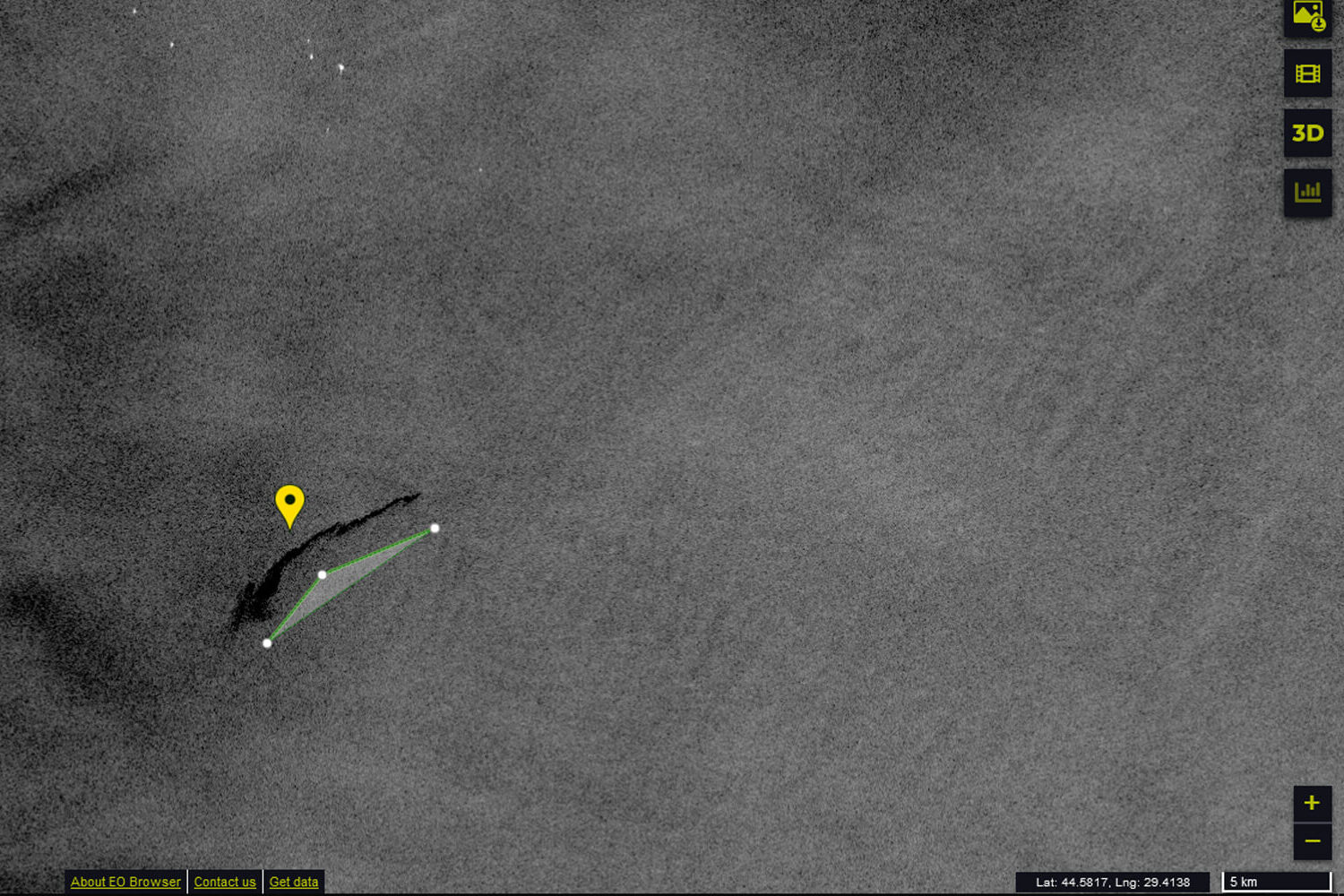
Phillip Gartlehner is an Infotrainer at the Ars Electronica Center and developed the Toolbox for Civil Investigation workshop series to explore how digital tools, like those used by the organization Bellingcat can support environmental accountability. In the workshop, participants work with satellite images, ship-tracking data, and ocean and wind models to identify and document possible environmental crimes, such as oil spills. During one workshop, participants even discovered signs of a potential spill in the Black Sea, with the findings passed on to maritime authorities for review.
“Many of us feel helpless or consider our personal scope for action to be too limited. While we like to pass on the responsibility to politicians, we are usually not aware enough that we ourselves can be part of the solution.”
Phillip Gartlehner, Infotrainer Ars Electronica
Technology as a means, not an end
Technology can never be the goal itself but must always be a means to human aspirations. We want to be creative — so we need tools that expand our possibilities, not ones that replace them. We want to explore the world, learn, and grow as individuals and apply our skills — so we need tools that strengthen our agency, not dictate what we do, when, and how.
Technology should enable a better life: more meaningful, healthier, and safer. To make this a reality, we cannot remain passive consumers of off-the-shelf products that only make rich companies richer. We must take an active role — as artists, researchers, activists, and citizens — in steering the development of technology toward the futures we choose.
